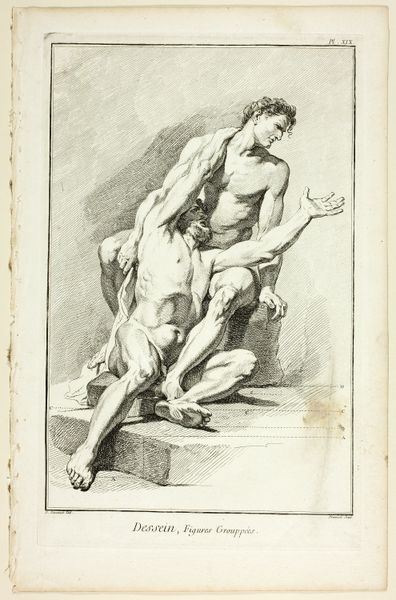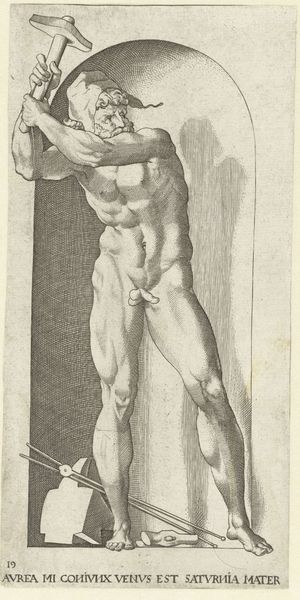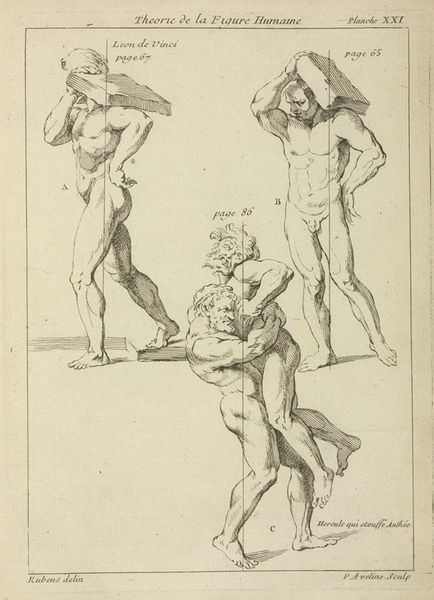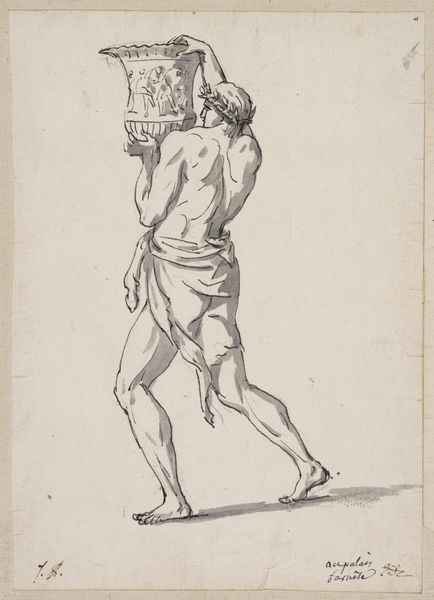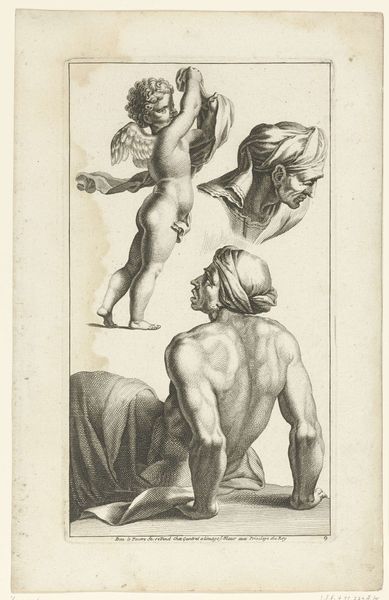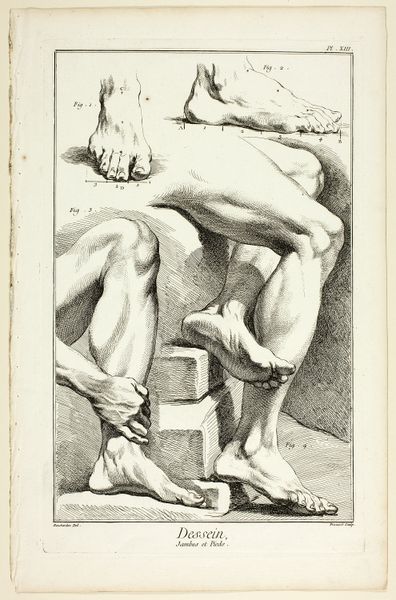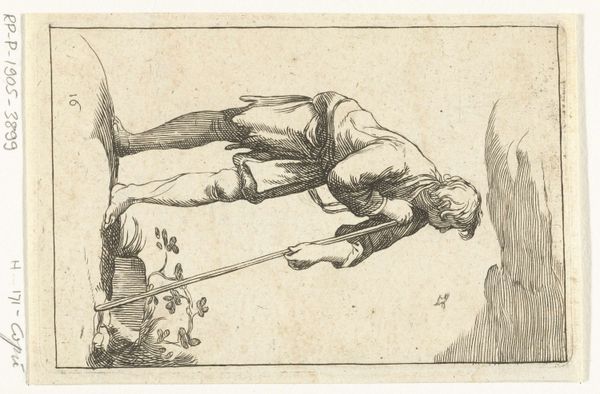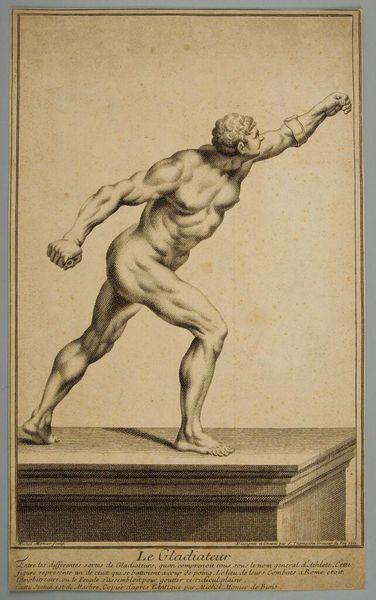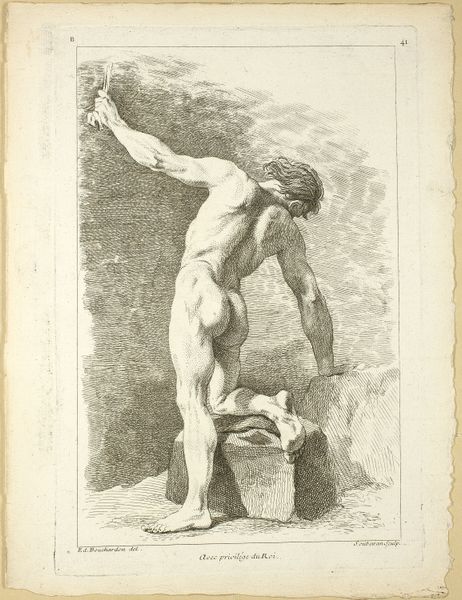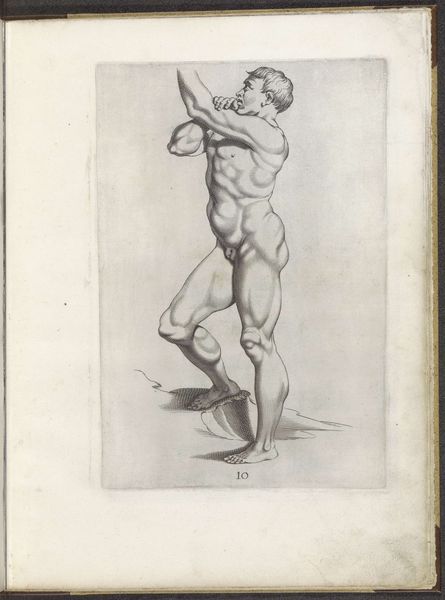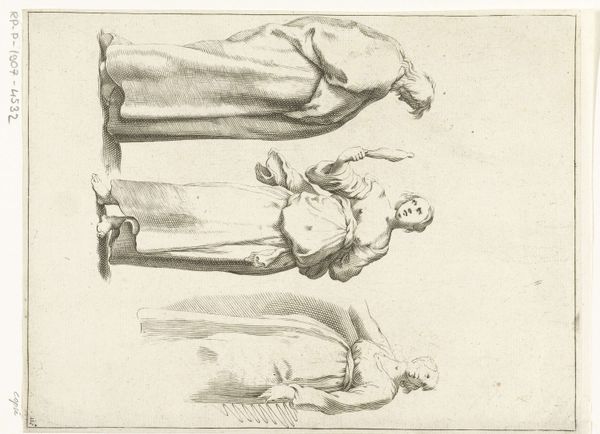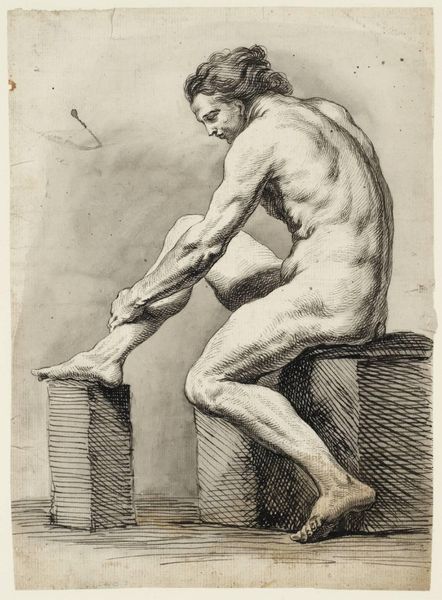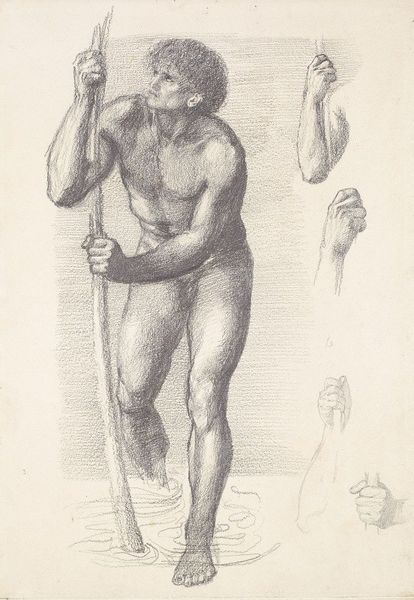
drawing, print, etching
#
portrait
#
drawing
#
animal
# print
#
etching
#
landscape
#
classical-realism
#
form
#
line
#
academic-art
#
realism
Dimensions: height 352 mm, width 248 mm
Copyright: Rijks Museum: Open Domain
Editor: So, this is "Two Men, a Woman and a Bull" by Carl Wilhelm Kolbe, created around 1801. It's an etching, so a print, currently held at the Rijksmuseum. My first impression is that it feels like a page from an anatomy textbook, but with an odd assortment of subjects. What can you tell me about it? Curator: You're right; it has that instructional feel, almost like an academic study sheet. In the late 18th and early 19th centuries, there was a surge of interest in Neoclassicism, emphasizing reason and classical ideals. This etching, therefore, could be a demonstration of the "ideal" human form that embodied intellectual values, but simultaneously speaks to the political importance that was ascribed to reason at the time. What effect does that have on your understanding of this image? Editor: Interesting! So, beyond the individual figures, the act of studying and categorizing becomes a statement in itself. Like an embrace of Enlightenment values? Curator: Precisely! The selection and arrangement—or the politics of imagery—highlights what society deemed worthy of attention and sets this view of reason in opposition to chaos, the body in opposition to a beast... And academic prints such as these, became vehicles for disseminating those messages more widely. Consider its purpose of public education: who was deemed worthy of being educated by such imagery, and who had access to these images? Editor: So it's not just *about* classical ideals; it's participating in a whole system of knowledge and power. I suppose it also says something about whose bodies were considered worthy of being rendered in art. Curator: Absolutely. We should not gloss over how gender and class structures are represented, nor ignore how visual conventions contribute to how those power structures function within the broader public imagination. Knowing that, what do you now think about that bull in the lower left? Editor: Now the bull reads like an "other"—animalistic, less-reasoned. Almost an opposite to those idealized human forms… Thank you; I'll never look at anatomical studies the same way again! Curator: Indeed. And by thinking about Kolbe's composition within the broader social and intellectual climate, we can grasp the complex relationship between art and its public function in communicating (and legitimizing) political ideology.
Comments
No comments
Be the first to comment and join the conversation on the ultimate creative platform.
